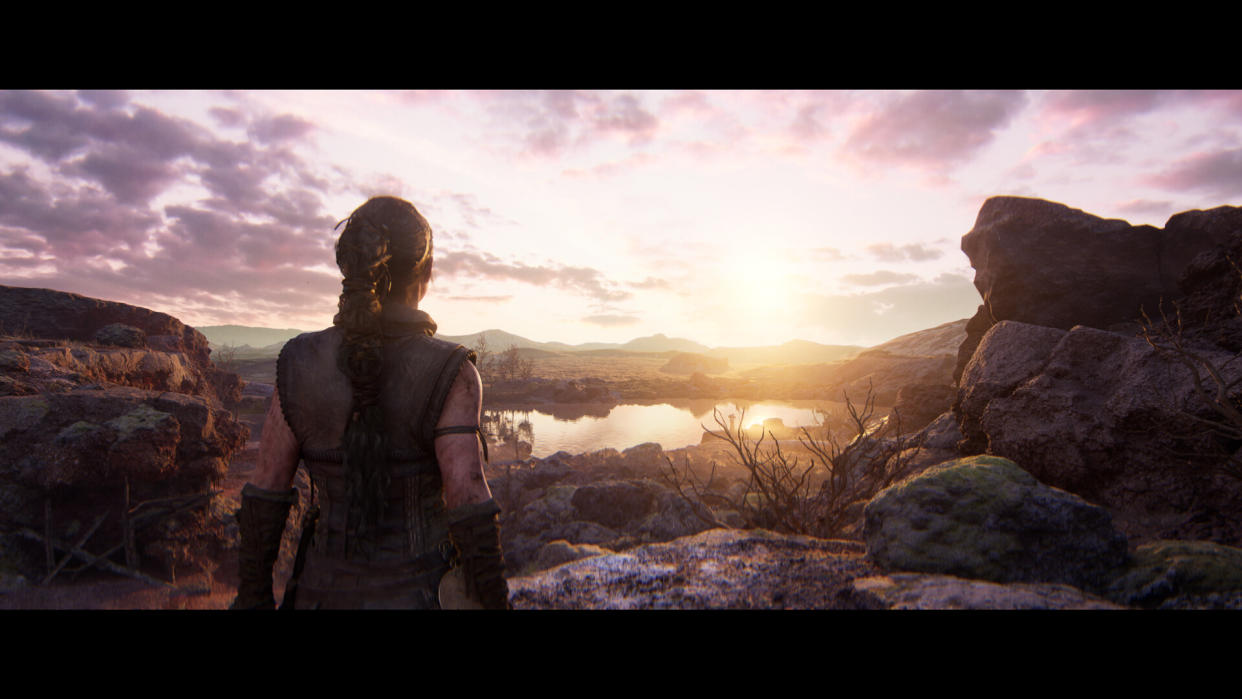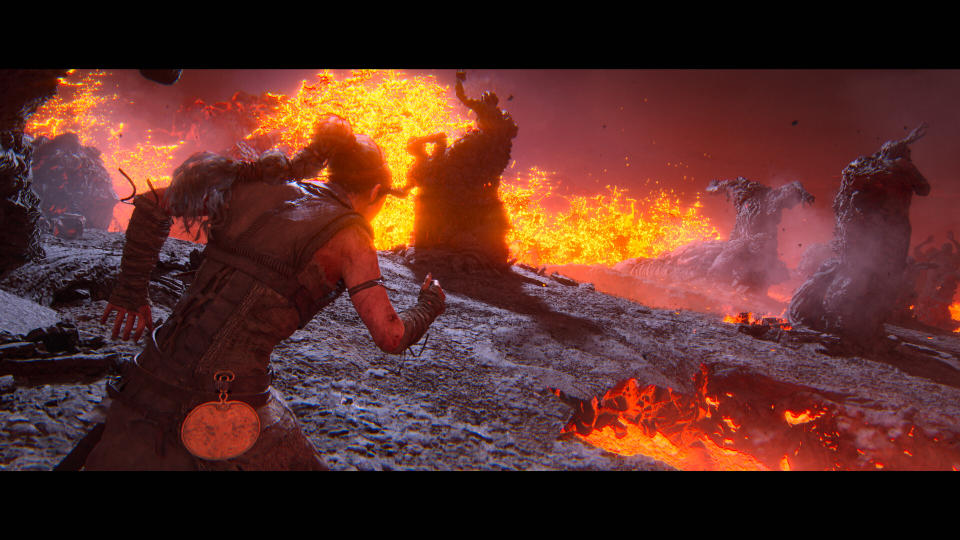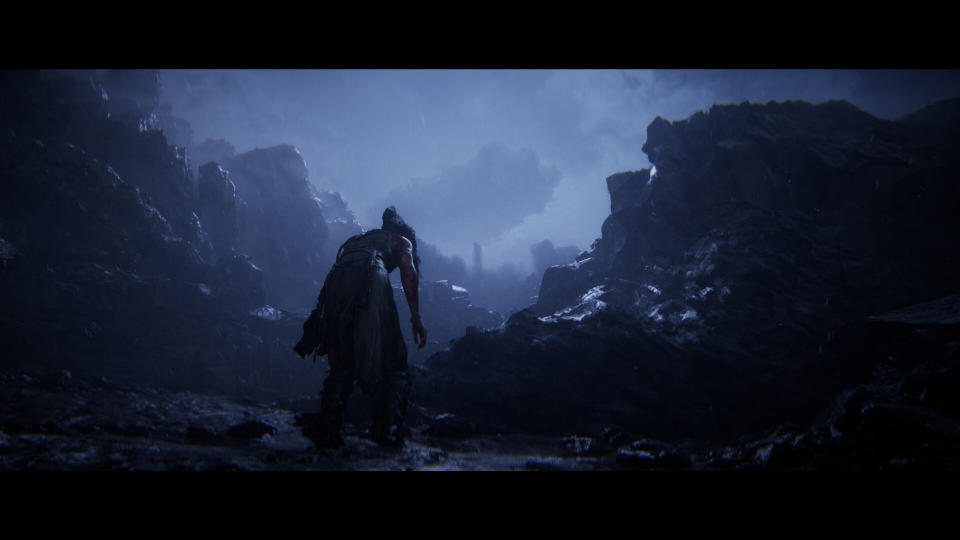Hellblade 2 is a master-class in immersive single-player gaming — this feature is revolutionary

- Oops!Something went wrong.Please try again later.
Senua's Saga: Hellblade II is a haunting experience. My cortisol levels spiked at every sound and every voice inside my head. The binaural audio is the highlight of Hellblade 2, as it is in the original Hellblade, but it’s an experience unique to Ninja Theory’s take on Senua’s psychosis. There is a smaller feature that revolutionizes the immersive gameplay experience — trust me.
Before Hellblade 2 begins, the game introduces you to the control scheme. Not through any tutorials or videos. It’s just a typical controller diagram you’d find in the settings. Why would Ninja Theory display the controls before you start? Because no tutorials exist in-game. Yes, quite a few games don’t spoon-feed you tutorials, like the brutal FromSoftware titles, but there’s never been an impact quite like this.
Hellblade 2 is a cinematic experience. Cutscenes and gameplay are so seamless I didn’t know which I was in, but the game trusted me to respond accordingly. Let me explain.
No in-game prompts
Imagine this: You’re in an epic cutscene and your character is about to get turned into ground beef, then a big ol’ prompt pops up in the middle of the screen — “X.” It’s immersion-breaking, but there isn’t a better alternative for interacting with cutscenes… or is there?

Ninja Theory implied that I wouldn’t see the controller scheme again by showing it to me before Hellblade 2 started. When I crawled into a shipwreck and came to a sudden stop, I assumed a cutscene was about to play — nope. I needed to press the interact button to move something out of the way.
As I walked onto the beach, some jabroni knocked me over and started fighting for my sword. Again, I thought this was a cutscene, but subtle visual effects made the scene look more active, which is when I started spamming the attack button. Yes! I kicked him off and started slicing with my sword.
The game didn’t need to explicitly tell me when to act. I just did. To be fair, I might’ve been spamming buttons during moments where I didn’t need to. But that level of immersion is something I’ve never experienced in any other video game.
The developers also built the Focus bar into the game-world. It’s a simple trinket attached to Senua’s side that we can see as the indicator, eliminating any unnecessary HUD elements. When I first got access to the Focus ability, the game once again did not prompt me to use it with any sort of tutorial or even a simple button indicator.
It’s one thing to not prompt the players during interactive cutscenes, but these aren’t cutscenes in the traditional sense. They are part of the gameplay.
When video games become cinema
From the anamorphic widescreen aspect ratio (2.39:1) to the unbelievable visual fidelity (developed in Unreal Engine 5), it feels like Ninja Theory made a deal with the devil to get Hellblade 2 to look this good.

There’s no additional rendering, dip in quality, or janky animations when you transition from cutscene to gameplay. I could not tell which I was in, and I think that’s the key to selling the immersion and the perfect situation to implement gameplay elements when players least expect it. Once that’s introduced, every moment feels like an experience you have alongside the character, not just something that happens on screen.
One of the biggest issues with AAA games today is there are a lot of bombastic cutscenes that feel senseless and detached from the players' control. Ninja Theory bridges that gap, and it’s an example that game developers could and should follow.
However, it’s not possible in all cinematic video games. One major advantage Hellblade 2 offers is its simple gameplay mechanics. The combat is there to highlight the visuals, not the other way around. Yes, the combat is still intense, but you only have to worry about your two attacks, block, and dodge. Then there’s Focus, which you can use to slow down time.
Considering modern AAA games capitalize on every single button and a combination of inputs, the combat is less overwhelming. So you don’t need to scramble in a cutscene to figure out which button you need to hit. You get the idea you need to dodge when a giant man is about to pummel you on the ground.
It’s not boring, either. If Hellblade 2 lasted 100 hours, then yeah, I would get bored. But it’s roughly a 9-hour game. That goes a long way to explaining how the game looks as amazing as it does. Hellblade 2 prioritizes quality over quantity.
Bottom line
AAA game studios that pride itself on creating immersive gameplay experiences need to learn this lesson from Hellblade 2 — trust in your players.
More HUD elements have slowly but surely made their way out, which is great. But the ultimate goal is to remove the HUD entirely and create in-game indicators to signify game mechanics. Like I said earlier, more complex games might not be capable of it. However, throwing players in active cutscenes without any guidance is the next step in immersive gaming that I didn’t know I needed.
Hellblade 2 is a masterful example of an immersive gameplay experience that I didn’t expect to see this generation, let alone on the Xbox Series X.

